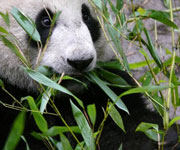Huanglong Scenic Historic Interest Area China
Huanglong Scenic Historic Interest Area in China is situated in the north-west of Sichaun Province; the Huanglong valley is made up of snow-capped peaks and the easternmost of all the Chinese glaciers. In addition to its mountain landscape, diverse forest ecosystems can be found, as well as spectacular limestone formations, waterfalls and hot springs. The area also has a population of endangered animals, including the giant panda and the Sichuan golden snub-nosed monkey. The property lies in the southern part of the Min Shan Range, approximately 150 km north/north-west of the provincial capital of Chengdu. It is divided into two distinct sites: the Huanglong subdivision and the Mouni Gully subdivision.

Continent: Asia
Country: China
Category: Natural
Criterion: (VII)
Date of Inscription: 1992
Greatest Geologically Interest of Huanglong Scenic
Tectonic activity, in the form of earthquakes, is fairly frequent. The relief is predominantly precipitous, a particularly spectacular example being where the Fujiang River flows through the Danyun Gorge. Above the timberline are extensive areas of precipitous mountain scenery, snow-covered for much of the year. Xuebaoding, or Snow Mountain Peak, is permanently snow-covered and bears the easternmost glacier in China. Of greatest geologically interest is the extensive calcite deposition that has taken place, notably along the 3.6 km Huanglonggou (Yellow Dragon Gully) where there are several extensive areas of travertine pools.
Algae and bacteria proliferate in a number of these pools, giving a wide range of colours from orange and yellow to green and blue. Other karst features include long limestone shoals, notably Liujinshan (Glazed Golden Fan) and Jinshatan (Golden Sand Beach), in Huanglonggou. These are extensive slopes of active limestone deposition, covered entirely by a thin layer of flowing water.



